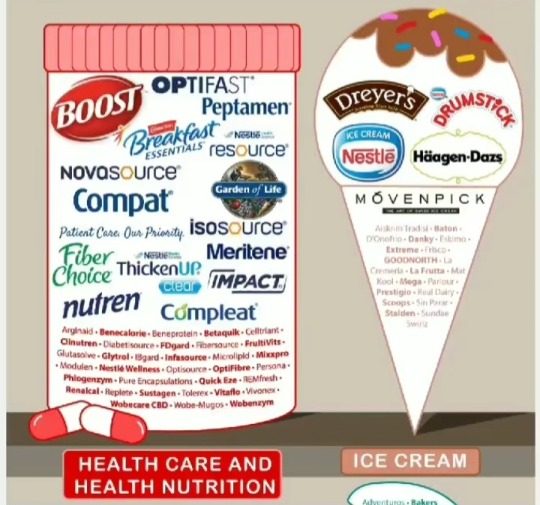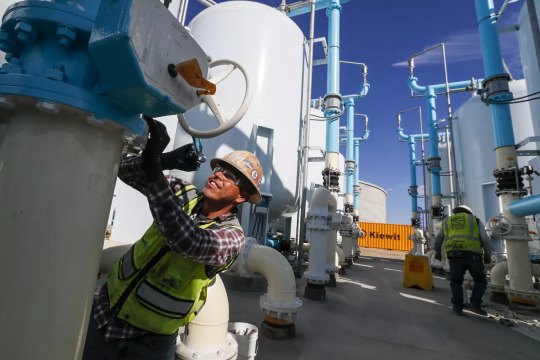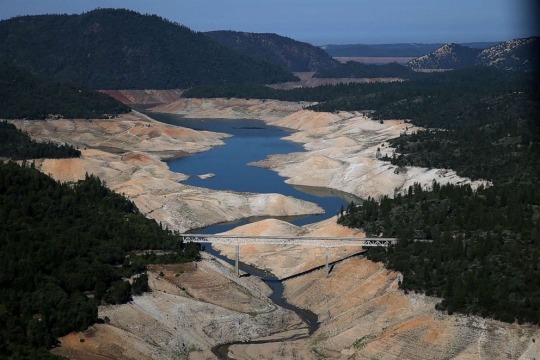#california drought
Text
"A parade of atmospheric river-fueled winter storms in California and other western states has erased the most extreme drought conditions for the first time since 2020 and more water is on the way, forecasters predict.
The U.S. Drought Monitor's latest conditions report shows no part of California is in the Extreme or Exceptional Drought designations that blanketed most of the state last summer.
Most of the central portion of the state is completely free of drought conditions from the latest readings on March 14. Parts of Northern and Southern California are still showing Abnormally Dry or Moderate Drought on the scale, while Moderate Drought conditions are still in place in parts of Siskiyou, Lassen, Modoc, Inyo and San Bernardino counties .

Record snowfall and rain have helped to loosen drought's grip on parts of the western U.S. as national forecasters and climate experts warned Thursday that some areas should expect more flooding as the snow begins to melt...
Jon Gottschalck, chief of the operational prediction branch at NOAA's Climate Prediction Center, said the start of the fire season in the Southwestern U.S. likely will be delayed."
-via CBS News, 3/16/23
And an update from 3/30/23
50% of California is now out of drought completely!
Couldn't find an article about this that didn't have a picture of drastic flooding, rip.
"Drought conditions across California continue to retreat thanks to heavy rain and historic snowfall that has battered the Golden State since late last year.
Data from the U.S. Drought Monitor released on Thursday shows that more than 50% of California is free of any drought classification for the first time since February 2020...
In November, virtually all of California’s Central Valley was deemed to be in an “exceptional drought,” the U.S. Drought Monitor’s worst classification.
As of [March 30th], California’s entire coastline was drought-free and only a small section of the Central Valley was considered “abnormally dry.” More significant drought conditions still exist in the northeastern and southeastern areas of the state...
California’s Sierra Nevada mountains are seeing record snowpack that will eventually melt and fill the state’s reservoirs. On Wednesday, Mammoth Mountain ski resort announced it had set a new all-time snowfall record."
-via KTLA, 3/30/23
#california#united states#drought#california drought#snowpack#mammoth#sierra nevada mountains#water reservoir#water conservation#rain#good news#hope
108 notes
·
View notes
Text
I read an article the other day about how a bunch of celebrities including the Kardashians had gone over their water rationing limit in California, which has been in a drought for three years. A fine isn’t much of a deterrent.
I suspect that this sort of thing is the real reason people have been making jokes about the Oceangate/Titan Submersible imploding. It’s not really about 5 billionaires**, it’s about every billionaire whose money is able to shield them from consequence***.
** It’s not even 5 billionaires. It’s 2 billionaires, a teenager, a researcher, and a CEO who only just broke even with his startup duct tape and bailing wire tourism venture.
*** The whole thing makes me think of the French people lined up along the street to watch Marie Antoinette go to the guillotine. By this point she’d been falsely accused to her face of molesting her son, had that son taken away and heard the jailers beating him. She had uterine cancer and had stopped eating out of depression. If she were just an ordinary person, she would have inspired pity. But because she was the queen, people spat on her.
#oceangate#titanic#titan submersible#rms titanic#titan#billionaire#kardashian family#california drought#marie antoinette#the french revolution#we wouldn’t be acting like this if it was Dolly Parton on that sub#then again Dolly isn’t a billionaire#she gives so much to charity
38 notes
·
View notes
Text
⚠️AVOID NESTLE ⚠️
Nestle is one of the biggest companies in the world, selling a wide range of products such as water, baby formula, baby food, sweets/candy, ice cream, meals, and so much more.
They benefit off the work of slaves, especially child slaves, they have ruined places in the poorer sides of Africa that have running water so the locals have to rely on their bottled water, the ceo is quoted in saying "water is not a human right", their water branch has been responsible for droughts in places like California and Flint, Michigan, they pump over 700 gallons/2649 litres of water from reserves and communities. They even have the nickname "baby killer" because they are responsible for the deaths of around 66,000 babies, possibly/probably more, because of scheme in the 70s-80s where they claimed breast milk is bad for babies and even paid of doctors to endorse them, they gave free baby formula to mothers but the supply was only big enough for the amount of feeds it would take for the mothers milk to dry up, meaning by the end of the supply they would have no choice but to buy the formula. A lot of these mothers didn't have access to clean water, so they had to use unsanitary water and a lot of babies died because of this.
Nestle owns thousands of brands world wide and it's almost impossible to avoid them
Here's some products owned by Nestle:
● Pure Life
● Nesquick
● Deer Park
● Perrier
● Gerber
● Neslac
● Gluten Free Gofree
● Ceregrow
● NAN
● Fitness
● Uncle Toby's
● NAT
● Ice Mountain
● Bar One
● Curiously Cinnamon
● Cini Mini's
● Aero
● Polo
● Rowntree's
● Milkybars
● KitKat
● Coffee Crisp
● After Eight
● Nescafe
● Nespresso
● Lean Cuisine
● Gloria
● Ideal
● Chef Mate
● Klim
● La Lechera
● Trio
● Nesfruta
● Milo
● Svelty
● Carnations
● Abuelita
● Drumstick
● Fibre Choice
● Nutren
● Impact
● Compat
● Novasource
● Boost
● Thicken Up
● Compleat
● Meritene
● Optifast
● Dreyer's
● Breakfast Essentials
● Garden of Life
● Movenpick
● Tidy Cats
● Alpo
● One
● Frosty Paws
● Fancy Feast
● Kit Kaboodle
● Friskies
● Pro Plan
● Purina
● Cat Chow
● Felix
● Delissio
● Nestea
● L'Oréal
● Garnier
● Nerds
● Laffy Taffy
● Turtles
● Wonka
● Chips Ahoy!
● Choclait Chips
● Alpia
● Chocco Crossies
● Cheerios
● Hot Pockets
● Starbucks at home coffee
● Caramac
● Smarties
● Randoms
● Fruit Pastilles
● Jelly Tots
● Fruit Gums
● Lion
● Splash
● Sanpellegrino
● Essentia
● Acqua Panna
● Poland Spring
● Urban Decay
● Lancôme
● Nutrisse
● Olay
● Chuckie
● Vittel
● Ozarka
● Little Steps
● Mackintosh's
● Damak
● Carlosv
● Orion
● Cailler
● Libby's
● Thomy
● California Pizza Kitchen
● Maggi
● Purity Organic
● Nido
● Beggin'
These are just SOME of the products this company owns, they are one of 10 corporations that own the whole food industry. Here are the products we know are owned by Nestle:






#nestle#fuck nestle#end slavery#slavery#chocolate slave trade#capitalism#corporations#africa#asia#drought#california drought#water is a right#big corporations
24 notes
·
View notes
Text
#california drought#drought#severe weather#ground water#colorado river#climate change#global warming
4 notes
·
View notes
Link

Excerpt from this story from the LA Times:
This drought, the worst on record, is the result of many factors, some flukes of nature and others the consequences of human activity.
Average summer temperatures in California are 3 degrees higher now than they were at the end of the 19th century. Less snow falls, which means the volume of water feeding streams and reservoirs is 15% to 30% lower than in the mid-1900s.
There have been stretches of dry years in this part of the world as far back as the climatological records go. But global warming has escalated the current dry period into disaster territory.
Humans aren’t the only ones in need of more water. Parched vegetation and soil must also now compete with a thirstier sky, thanks to atmospheric changes brought about by decades of steady temperature increase.
A warmer atmosphere holds more water, and the warmer it gets, the more water it wants — regardless of need on the ground. In a study published last month in the Journal of Hydrometeorology, researchers combing through 40 years of data found that the atmosphere across the continental U.S. now demands a greater share of water than it used to, especially in the West.
The effect isn’t linear: as the planet gets hotter, the sky gets even thirstier.
“As the climate is warmed, that pull of water from the land surface into the atmosphere essentially becomes more forceful,” said study leader Christine Albano, a hydrologist at the Desert Research Institute in Reno.
That increasing force means it takes more water today than it did 40 years ago to provide plants with the same level of hydration. The Rio Grande region that covers parts of Colorado, New Mexico and Texas now needs 8% to 15% more water to get the same irrigation result, the researchers calculated. The effect is slightly less in California but still present, Albano said.
More than half of this increased thirst was due to increased temperatures, the authors found. Other factors included changes in humidity (26%), wind speed (10%) and solar radiation (8%).
Unlike earthquakes and hurricanes, the onset of a drought can’t be pinned to a day or an hour. “It’s one of these creeping disasters,” said John Abatzoglou, a UC Merced climatologist who worked on the study with Albano.
Drought manifests in several different forms that don’t always happen at the same time: decreased rainfall, low stream and groundwater levels, thirsty crops, insufficient community supplies or struggling ecosystems.
“When it starts to feel really bad is when all of those types of drought are essentially happening at the same time. And that’s kind of where we’re at right now,” said Faith Kearns, a scientist with the California Institute for Water Resources in Oakland.
29 notes
·
View notes
Text
19 notes
·
View notes
Text

View on Twitter
More than 1,200 wells have run dry this year in California, a nearly 50% increase over the same period last year.
(Source)
4 notes
·
View notes
Link

“As drought and climate change ravage California’s once-reliable supply of drinking water, officials in Los Angeles are setting their sights on a relatively new, almost untapped resource for the city’s 4 million residents: the Superfund site in their own backyard.
Nearly 70% of the city’s 115 wells in the San Fernando Valley groundwater basin — the largest such basin under the purview of the Los Angeles Department of Water and Power — have been sitting unused for decades after dangerous contaminants seeped into the aquifer.
Now, the city is nearing the completion of a massive, $600-million plan to bring that resource back online. Centered on three treatment facilities in the San Fernando Valley, the groundwater remediation project will essentially create giant filters for the city’s toxic plume, enabling Angelenos to regain full access to up to 87,000 acre-feet of water each year, or nearly a fifth of what they consume...
The city has long relied on other supplies to get by, including water imported from the Owens Valley, Northern California and the Colorado River via a network of aging aqueducts. But as drought saps those sources, Los Angeles is being forced to fundamentally overhaul its water infrastructure.
Currently, only 10% of the water used by the city is sourced locally. The DWP hopes that will increase to 70% by 2035 as the filtration equipment and other major projects are completed...
In Los Angeles, nearly half of the project money so far — about $310 million of $634 million — has come from state grant funds through Proposition 1, a $7.5-billion water bond passed by voters in 2014...
[Professor] Gold, of UCLA, said the scope and scale of the projects in the San Fernando Valley give him “a tremendous amount of hope” for the city’s water future.
“We’re getting reliable, local water supplies,” he said, “and that’s something we need a lot more of here in the state of California.”” -via Los Angeles Times, 12/12/22
#california drought#california#drought#united states#climate change#climate resilience#water#groundwater#water conservation#los angeles#san fernando valley#good news#hope
26 notes
·
View notes
Text
I can hear the rain in the gutter. It's awesome.
2 notes
·
View notes
Text
Link on tips to save water!! 💧💧💧💧
#california drought#California#drought#save water#water tips#summer 2022#summer#2022#june#Cannibalgh0st
4 notes
·
View notes
Text
Southern California refills largest reservoir - Los Angeles Times
2 notes
·
View notes
Link
Excerpt from this story from the LA Times:
With the Colorado River in crisis and reservoir levels continuing to decline, some California water agencies are planning to significantly reduce the amount they take from the river starting next year.
As a result, officials with the Metropolitan Water District of Southern California said they plan to endorse mandatory conservation measures to begin rationing water for cities and local agencies that supply 19 million people across six counties.
California is entitled to use 4.4 million acre-feet of Colorado River water per year, more than any other state. The water flows through canals to farmlands in Imperial and Riverside counties, and to cities from Los Angeles to San Diego.
Four water districts and the state’s Colorado River Board said in a letter to the federal government on Wednesday that they are proposing to reduce water use by up to 400,000 acre-feet per year. That would amount to about 9% of the state’s total water allotment from the river for the next four years, through 2026.
Details of how the water districts will achieve those reductions have yet to be worked out. But the agencies’ leaders said they are preparing to adopt conservation measures that will affect cities as well as farming areas.
“California is stepping up and leading the way on addressing this situation with action and making significant reductions,” said J.B. Hamby, a board member of the Imperial Irrigation District.
10 notes
·
View notes
Text
Photos Show Dramatic Difference in Water Levels at Lake Oroville From 2021 to Today, Now at 100% Capacity
A record wet season has led to California's second-largest reservoir filling up.
— ByJulia Jacobo | June 19, 2023
California's Lake Oroville, one of the many important reservoirs in the West that reached critically low levels during the height of the megadrought, is now filled to the brim.
Before and after images of Enterprise Bridge offer a sharp comparison for Lake Oroville between July 22, 2021, and June 15, 2023, after the reservoir, the second-largest in the state, reached full pool for the first time since 2012 -- and only the second time in the past 15 years, according to the California Department of Water Resources.

In this before-and-after composite image, a comparison of water levels at Lake Oroville between July 22, 2021, and June 15, 2023. Justin Sullivan/Getty Images
In September 2021, water levels in Oroville dipped to their lowest ever at 628.47 feet, at just 24% capacity. As of Monday, water levels neared 900 feet -- more than 100 feet higher than this time last year. Not only are water levels at the lake currently measuring at 100% capacity, they are at 127% of where they should be around this time of year, according to the DWR.
Storage at Lake Oroville has risen more than 240 feet and gained more than 2.5 million acre-feet of water since Dec. 1, according to the DWR.
The improving drought conditions in California are "a stark difference" from the last three years, California Department of Water Resources director Karla Nemeth said.
Oroville can hold 3.5 million acre-feet of water, with the peak flow from the snowpack in the Sierra Nevada mountains occurring in April as temperatures began to rise quickly in the region. Some spots in the Sierra Nevada mountains received up to 200% more snowpack than normal due to repeated rounds of atmospheric rivers that slammed the West Coast during the winter season.

A picnic table sits partially submerged in the waters of Lake Oroville, June 15, 2023 in Oroville, California. Justin Sullivan/Getty Images
Melting snowpack continues to contribute to nearly full reservoirs in the state. Lake Shasta, California's largest reservoir located about 120 miles north of Lake Oroville, is also close to full pool, nearing 97% capacity as of last week, according to the California Department of Water Resources. The San Luis Reservoir in Merced County, the fourth-largest in the state, is currently 99% full.
"It’s refreshing to see Lake Oroville and other State Water Project (SWP) reservoirs like San Luis near or at capacity," Nemeth said.
In April, when Lake Oroville was measuring at 91% capacity, the DWR announced the State Water Project would be delivering 100% allocation for the first time since 2006.
The department is continuing to optimize operations for water storage and environmental protection for the water delivery needs to 27 million Californians and 750,000 acres of farmland, Nemeth said. These operations will also allow for carryover storage into next year, she added.

A section of Lake Oroville is seen nearly dry, Aug. 19, 2014 in Oroville, California. Justin Sullivan/Getty Images
Officials began ordering the strategic release of water as soon as the melting began, fearing the devastating flooding that would occur from the rapid warm-up in temperatures. Those releases could temporarily increase to keep up with increasing water flows and maintain safe water levels.
Earlier this month, total releases to the Feather River amounted to 8,000 cubic feet per second (cfs). An additional 4,000 cfs was released from the Thermalito Afterbay River Outlet, located 5 miles downstream from Oroville, according to the DWS.
The department is "closely" monitoring the inflow of water runoff into the lake -- as well as evaluating the lake levels and downstream needs -- to determine how much water to release at any given time, Nemeth said.
Oroville Lake sits behind the tallest dam in the country, the Oroville Dam at 770.5 feet, and provides hydroelectric power to the Edward Hyatt Power Plant, the fourth-largest in the country.

In an aerial view, houseboats sit anchored at Bidwell Canyon Marina on Lake Oroville, June 15, 2023 in Oroville, California. Justin Sullivan/Getty Images
The plant was forced to close in 2021 when the record-low water levels were too low to flow downstream. In 2017, nearly 200,000 residents living near Lake Oroville, located about 75 miles north of Sacramento, were forced to evacuate after heavy rainfall damaged the dam's spillways, which could have allowed for uncontrolled floodwaters to release downstream.
Those spillways were rebuilt "to the highest engineering design and safety standards, and continue to operate as intended and designed," Nemeth said.
0 notes
Text

View on Twitter
New government maps show nearly all of the US West is in drought and it's not even summer yet: "This is unprecedented"
(Source)
2 notes
·
View notes
Text
Wow, we've had a lot of rain. The California drought is almost completely over now. I'll be interested to see how long that lasts.
If you're interested in more details, this piece does a great job covering the various aspects.
1 note
·
View note